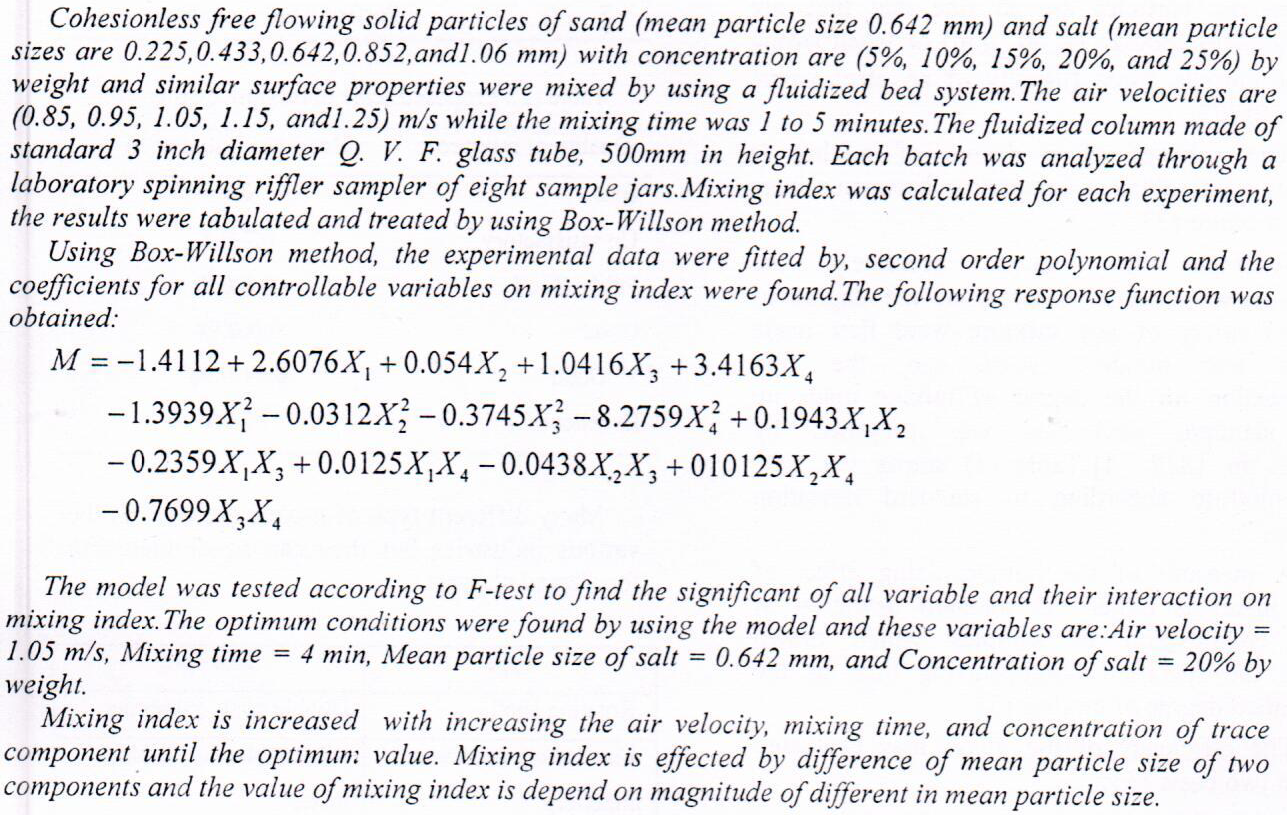
 (2)
(2)
Electrochemical oxidation in the presence of sodium chloride used for removal of phenol and any other organic by products formed during the electrolysis by using MnO2/graphite electrode. The performance of the electrode was evaluated in terms fraction of phenol and the formed organic by products removed during the electrolysis process. The results showed that the electrochemical oxidation process was very effective in the removal of phenol and the other organics, where the removal percentage of phenol was 97.33%, and the final value of TOC was 6.985 ppm after 4 hours and by using a speed of rotation of the MnO2 electrode equal to 200 rpm.
 (6)
(6)
 (3)
(3)
Background:Amino acid disorders are a major group of inborn error metabolism (IEM) with variable clinical presentation; its diagnosis constitutes a real challenge in a community with high consanguinity rate and no systematic newborn screening.
Objectives: to provide data about amino acid disorders detected in high-risk Iraqi children by using quantitative amino acid fluorescent high performance liquid chromatography (HPLC) analysis.
Type of the study: Cross-sectional study.
Methods: a descriptive cross sectional study from 1st February to 1st December 2014, at Neurological ward and clinic of the Children Welfare teaching Hospital, in Baghdad - Ira
... Show More (1)
(1)
High-performance liquid chromatographic methods are used for the determination of water-soluble vitamins with UV-Vis. Detector. A reversed-phase high-performance liquid chromatographic has been developed for determination of water-soluble vitamins. Identification of compounds was achieved by comparing their retention times and UV spectra with those of standards solution. Separation was performed on a C18 column, using an isocratic 30% (v/v) acetonitril in dionozed water as mobile phase at pH 3.5 and flow rate 1.0m/min. The method provides low detection and quantification limits, good linearity in a large concentration interval and good precision. The detection limits ranged from 0.01 to 0.025µg/ml. The accuracy of the method was
... Show More (4)
(4)
 (21)
(21)
 (5)
(5)
The cement slurry is a mixture of cement, water and additives which is established at the surface for injecting inside hole. The compressive strength is considered the most important properties of slurry for testing the slurry reliability and is the ability of slurry to resist deformation and formation fluids. Compressive strength is governed by the sort of raw materials that include additives, cement structure, and exposure circumstances. In this work, we use micro silica like pozzolanic materials. Silica fume is very fine noncrystalline substantial. Silica fume can be utilized like material for supplemental cementations for increasing the compressive strength and durability of cement. Silica fume has very fine particles size less
... Show MoreThis paper aims to investigate the flexural behavior of reinforced concrete beams considering fire resistance by adding Lightweight Expanded Clay Aggregates (LECA) to the concrete mix as partial coarse aggregate replacement. LECA is a type of porous clay with a uniform pore structure with fine, closed cells and hard, tightly sintered skin. The experimental work comprised four reinforced self-compacted concrete beams. All the specimens were identical in their geometrical layout of 1600×240×200 mm, reinforcement details, and support condition (simply supported). For all the beams, the main reinforcement was provided by two bars, each having a diameter of 12 mm, while a bar of 6 mm diameter was employed for the top and shear reinforc
... Show More (7)
(7)
 (6)
(6)
This research studies the effect of addition of some nanoparticles
(MgO, CuO) and grain size (30,40nm) on some physical properties
(impact strength, hardness and thermal conductivity) for a matrix
blend of epoxy resin with SBR rubber. Hand –Lay up method was
used to prepare the samples. All samples were immersed in water for
9 weeks.
The Results showed decreased in the values of impact strength and
hardness but increased the coefficient of thermal conductivity.
 (2)
(2)
 (8)
(8)
